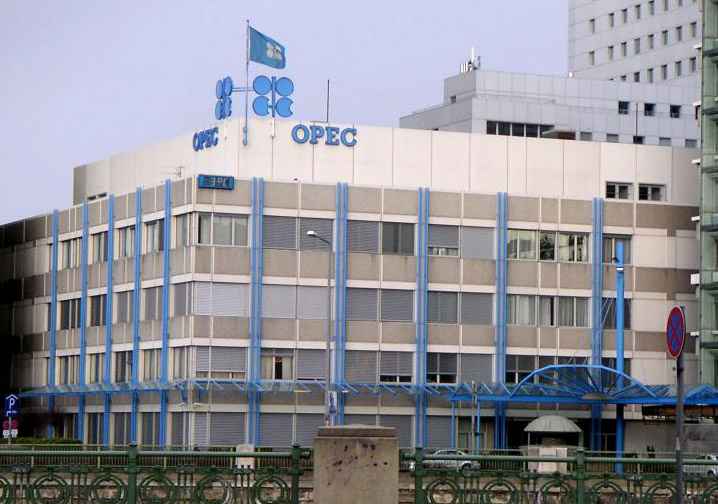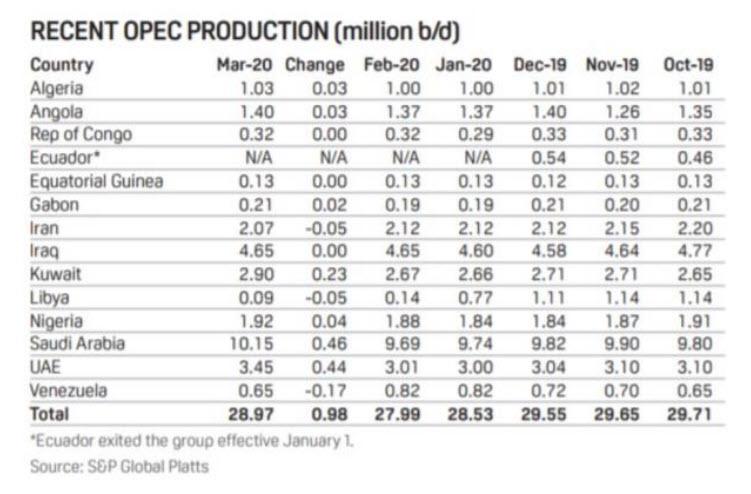
The delayed OPEC+ webinar on Thursday will arguably be the most important gathering of ministers to date, with countries outside OPEC+ also poised to potentially tune into the discussions, thus presenting scope for coordinated action. The meeting is due to commence at 15:00BST, with a presser to follow – all times tentative, OPEC+ pressers tend to be delayed. This will be followed by a G20 Energy Ministers’ meeting on Friday, expected to start at 13:00BST. Argentina, Brazil, Canada, Colombia, Egypt, Indonesia, Norway, the UK, the US, and Trinidad & Tobago have also been invited to partake in Thursday’s meeting, although at pixel time, not all are confirmed to attend. Sources said no one from the Trump Administration was expected to attend Thursday’s call. Saudi and Russia have called for other global producers – namely the US, Canada, and Mexico – to share the burden of cuts.
KEY PLAYERS
- OVERALL RHETORIC: Russia and Saudi have blamed each other for the collapse in oil prices. The two sides agreed to discussions following US President Trump’s recent intervention but made it clear that any cuts will have to be “fair”, and a joint global effort.
- SAUDI (12MLN BPD OUTPUT IN APRIL): The Kingdom is mulling an output cut to beneath 9mln BPD on the condition other oil members join in. A Saudi official said if there was no deal, “we will have some nice number of floating tankers going nowhere”.
- RUSSIA (11.29MLN BPD OUTPUT IN MARCH): Moscow’s participation is highly contingent on the US, and is unlikely to agree to output cuts if the US does not join the effort; separate reports said Russian producers are ready for oil curbs on the same proviso. Indeed, the CEO of The Russian Direct Investment Fund was optimistic, stating that Riyadh and Moscow are near an accord. The Kremlin has declined to signal Moscow’s position ahead of the meeting.
- US (13MLN BPD OUTPUT AT END-MARCH): The US has leaned back on calls to commit to cuts. President Trump said he did not make concessions during talks with Saudi and Russia and has not agreed to a US domestic production cuts. Further, he said US producers have already cut back as a reaction to the market. Meanwhile, US independent oil producers reportedly have told OPEC that they will voluntarily cut output, but US oil majors worry about the antitrust issues around any coordinated effort.
OTHER PRODUCERS
- BRAZIL (3.06MLN BPD OUTPUT IN FEBRUARY): State-owned Petrobras said it will curtail production by 100k BPD, according to a statement in March.
- CANADA (5.78MLN BPD OUTPUT IN FEBRUARY): Alberta’s Energy Minister stated that the country will take part in the talks and will “keep an open mind”. A senior government official downplayed any suggestions that the country will go along with further production cuts. NOTE: Alberta, like Texas in the US, has the regulatory framework to force producers to curb supply.
- NORWAY (2.07MLN BPD OUTPUT IN FEBRUARY): Norwegian Oil Ministry stated that it would consider partaking as an observer if there was broad participation but said, at the time, that there are no ongoing talks with oil companies on cuts. For reference, the country produces less than 2% of global supply.
PROPOSED CUTS
- DURATION OF CUTS: Delegates has said that current options being considered range from a 10mln BPD cut to no reduction at all, with a three-month agreement being considered, according to some reports. Some question whether a three-month deal would be sufficient to balance the market. The pact could be extended, but may face resistance from Russia and US, and could be highly contingent on market conditions at the time. Separate reports noted proposals for a year-long agreement.
- TOUTED SCENARIOS: Two scenarios will reportedly be put forward: 1) OPEC+ would no longer bound by production restrictions, which would see a continuation of the current situation. 2) OPEC alongside Russia and other producers would implement joint 10mln BPD reductions through to the end of the year. A separate report touted a joint 10mln BPD cut which would see the involvement of the US, Canada, and Brazil. The cuts will be distributed as follows: Saudi would cut a minimum of 3mln BPD from current levels, Russia 1.5mln BPD, Non-Saudi Gulf 1.5mln BPD, US, Canada, and Brazil almost 2mln BPD with Texas at least 500k BPD.
- BASELINE: It is unclear which production month will be benchmarked in any cuts. This set level could prove to be significant given Saudi’s output hike. OPEC sources said there is a rift between Moscow and Riyadh regarding which baseline to use, with latter calling for the current production environment to be used as the base line.

Analysts at Credit Suisse outline five potential outcomes from the meetings:
- 1) NO OPEC+ DEAL (5%): Russia and Saudi talks will break down – Brent could be pushed lower to ~USD 20/bbl
- 2) NO US DEAL (20%): If the US refuses to partake, Russia and Saudi will also ditch talks – Brent could be pushed lower to ~USD 20/bbl
- 3) A “LARGE” DEAL (20%): around 15mln BPD cut from current levels supported by OPEC+, US and other producers for at least three months with possible extension – Brent could rise to around USD 35-40/bbl.
- 4) A “SMALL” DEAL (35%): Immediate OPEC+ cuts of 12-13mln BPD; US offers mild reductions in Gulf of Mexico and Shale output and the purchase of oil for the Strategic Petroleum Reserve (SPR) – Brent could see USD 30-35/bbl.
- 5) AN “EVEN SMALLER” DEAL (20%): US relies on natural output reductions and offers to purchase around 0.8-1.0mln BPD for the SPR. Brent could meander below USD 30/bbl with scope for a rise to ~USD 35/bbl should US production markedly decline naturally.
TARIFFS:
US President Trump on the weekend said he was considering slapping tariffs on oil imports, or even take other such measures, to protect the US energy sector from falling oil prices. For reference, the US imports of petroleum were around 9.1mln BPD in 2019, of which Saudi and Russian imports were just over 500k each.
G20 ENERGY MEETING:
The fallout from the OPEC+ meeting would set the stage for the G20 webinar on Friday. Energy Intel notes members outside OPEC+ will be asked pledge additional reductions, “over and above 10mln BPD”. A Senior Russian source noted that efforts to get the US involved in cuts will be on the agenda for Friday’s call. Desks remain sceptical a deal can be reached at this meeting. G20 members such as South Korea and Japan produce little oil, whilst others such as China, India, and the UK are more reliant on imports.
Following the meeting, Saudi Aramco, UAE’s ADNOC and Kuwait’s KPC are expected to release their OSPs for May.


